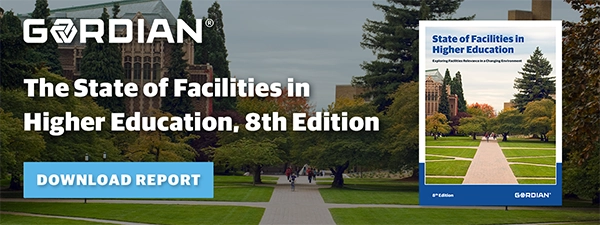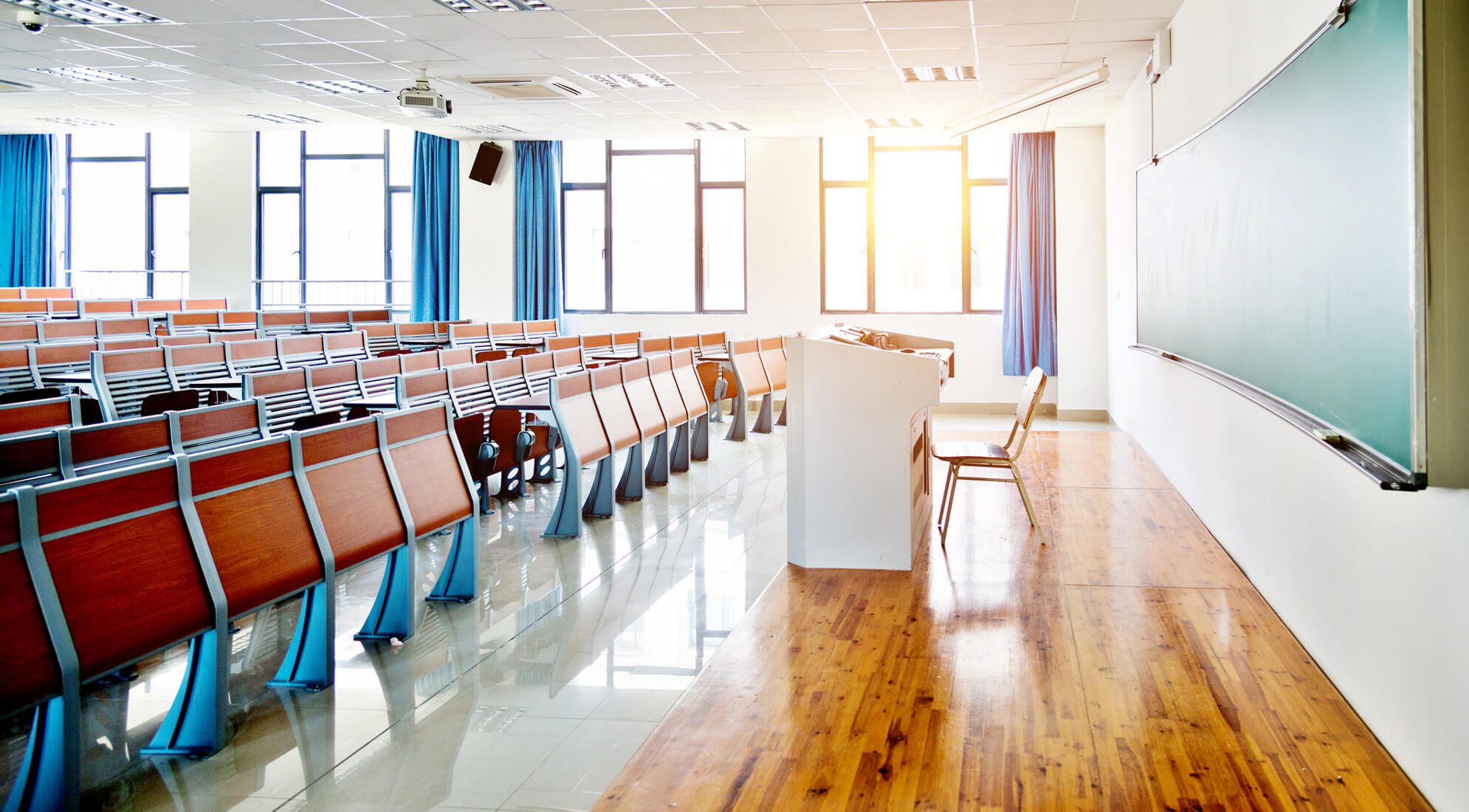In February of 2021, Gordian, in collaboration with APPA, published its annual State of Facilities in Higher Education. The eighth edition of the report focused on the transitioning state of college and university campuses as a result of the financial and enrollment trends existing before the coronavirus pandemic, the impacts of COVID-19 and the craters left in its wake, and the future of facilities stewardship in a higher education landscape that will never be the same.
The State of Facilities report has generated a wealth of conversation as leaders in the higher ed space grapple with dramatic changes to their long-standing business model and shifting expectations of the college/university experience. In an effort to continue this all-important discussion, Gordian’s Vice President of Market Strategy and Development for Higher Education, Pete Zuraw, and E. Lander Medlin, Vice President and CEO of APPA, are answering a selection of questions we’ve received from industry leaders.
We tackled campus space in our first post. Today, we look at questions about how the higher ed facilities organization is evolving.
Q: I have not seen any good plans for how we transition our workforce to handle the more complicated technologies. Smart buildings only stay smart with a specialty workforce. Work from home technology will only drive many away from maintenance required and towards IT skills. How do you see this transition happening? – Jim S., Florida State University
A: Jim, there is no doubt that there is a long way to go in making this transition in both our existing workforce and in developing technologies for the workforce of the future. Absolutely, facilities organizations are moving from mechanics to technicians and even engineers. The new higher ed world will use big, predictive data analytics and artificial intelligence.
Our smart buildings will be smarter than ever before but require thoughtful owners/operators. You are spot on about that. Some of our employees will be ready to learn new skills. Others will transition out, due to age or their own volition. But today’s interconnected world has created the possibility of bringing talent in from all over the nation and the world. As educational institutions, our first instinct can and should be to create opportunities for our existing talent, however; we should welcome these new skills and new players into our increasingly dynamic facilities organizations. These are uncomfortable issues for some, but the first step is to be candid and honest with the people who will experience workplace transitions firsthand. When everyone is fully aware of the transitional reality, there is more than enough talent in most existing facilities organizations to not only weather this challenge but to excel at besting it.
Learn more about the future of facilities organizations and other findings from the State of Facilities in Higher Education from authors of the report and special guest, Dave Irvin, Vice President for Facilities at Florida State University. Watch “Exploring Facilities Relevance in a Changing Higher Ed Environment,” an on demand webinar presented in partnership with the Higher Ed Facilities Forum.
Q: Where will outsourcing fit into the campus of the future? – Scott C., Massachusetts Division of Capital Asset Management and Maintenance (DCAMM) – Executive Office of Education
A: The financial resources must be found to address staff transitions over time. It’s simply a necessity. As to the places where existing skills are lacking, a deep review will be essential to assess the potential for development, as well as a fundamental understanding of each job task. Roles will need to be reimagined and reconfigured. As the industry evolves, there will be time for those who are change-averse to work their way out of your facilities organization while strong leaders assemble the new team that will carry them into the future, comprised of existing team members, new faces and, in some cases, third-party partners.
Q: How do expected shifts in the physical campus affect plans to align facility operations with organizational carbon reduction/sustainability plans? – Stephen B., HGA Architects and Engineers
A: Stephen, there is a natural synergy between optimizing the size of the physical portfolio used by the school and the opportunity to address sustainability concerns and plans. Any effort to reduce the total space in use will assist in maximizing the value of investments made to reduce carbon usage. Still, schools shouldn’t be naïve about offloading carbon footprint to the homes of employees who no longer work on campus if remote work becomes permanent or if travel is reduced as the virtual meetings trend continues. An assessment of these associated Tier 3 elements should be done to gather relevant data. Similarly, there is a tremendous link between the Healthy/Smart buildings initiative with its goals for a better indoor environment via more thoughtful operation and sustainability plans for campuses of all types and sizes.
Q: Where are we on producing strategies where facilities management and buildings can contribute to student mental health? – Jonathan S., Tarkett Group
A: Jonathan, after working from home for the last 12 months, wellness has taken on a whole new meaning. There will be a significant shift going forward as we all return to some form of three-dimensional community. But it is fair to note that we will build on the notions of healthy buildings going forward. This means enhancing our focus on materials, access to light and proper ventilation. That ventilation piece will get the most attention coming out of the pandemic, and it’s probable that campuses continue deep cleaning practices that were normalized during the past year, even if the jury is out on whether those practices helped.
Students who struggled with triggers of various kinds over the past several decades may come out of the pandemic with new concerns that will need to be managed and addressed by schools seeking to create the healthiest possible learning environment. APPA is working on the Healthy/Smart buildings initiative and we expect much more to come from that work in the near future.






